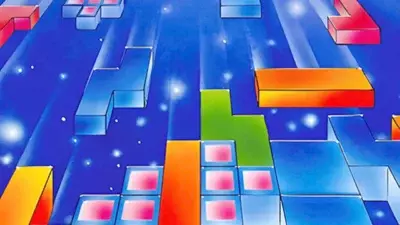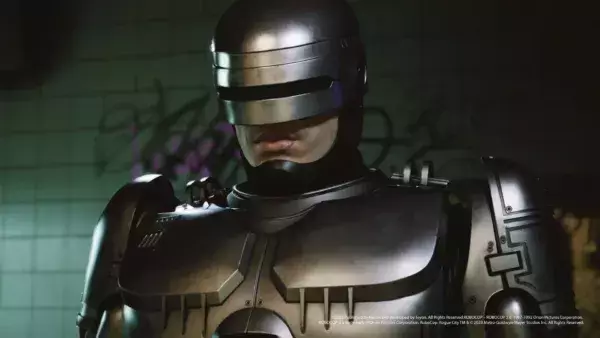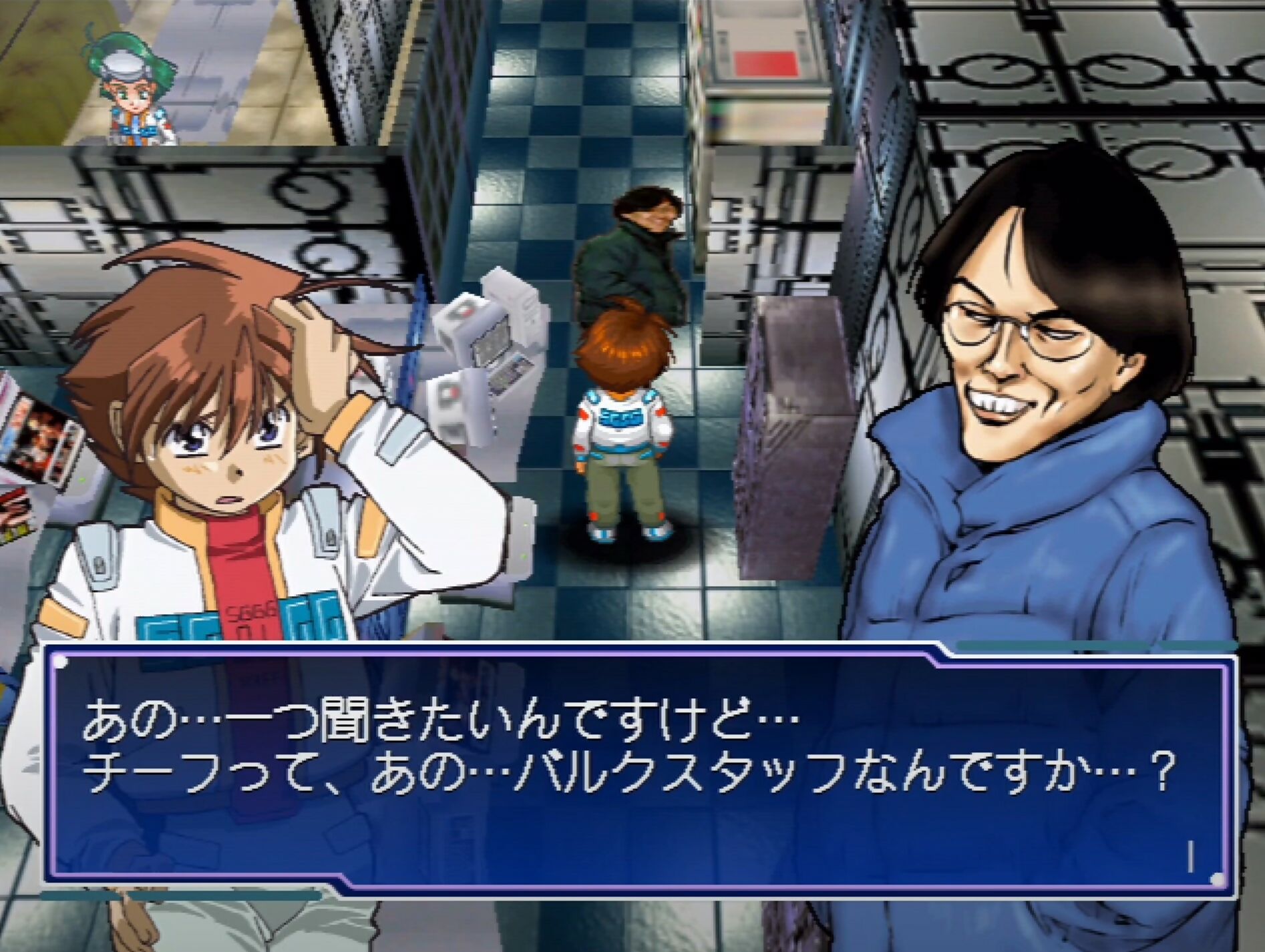
Sega’s baffling business decisions are nothing new: in 2001, it made an entire game about them – the Japan-only RPG parody, Segagaga.
Older readers may remember the sad but hilarious day in 1991 when UK high-street jewellery-chain owner Gerald Ratner inexplicably destroyed his entire business by proudly describing his company’s products as “total crap” at a public speech to 6,000 assembled businessmen and journalists.
The Gerald Ratner of today could potentially be Shuji Utsumi, current co-chief operating officer of Sega, who on 7 July was reported as having criticised the recent trend for blockchain-based NFT games as being “boring”, asking “What’s the point [of playing them] if [such] games are no fun?”.
This was unfortunate as, a mere three days later, Sega announced a partnership with South Korean firm Line Next to transform at least one of its old IPs into an online blockchain-based NFT game – presumably, a very “boring” one which is “no fun” to play.
Arguably, Utsumi’s badly-timed words were an accurate assessment of such titles, in which players with more money than sense can pay up to several hundred pounds for one-of-a-kind in-game assets like new hats for characters, as an alleged ‘investment’ to potentially be sold on to even higher bidders in the future, much as some rich bankers treat classic artworks.
Yet the entire NFT-gaming bubble recently appears to have burst. As such, Sega will only be allowing their lesser-known and dormant IPs, like Virtua Fighter or Fantasy Zone, to be used in such titles, to avoid sullying the reputations of Sonic and Shinobi by association with such “boring”, fan-exploiting money-leechers.
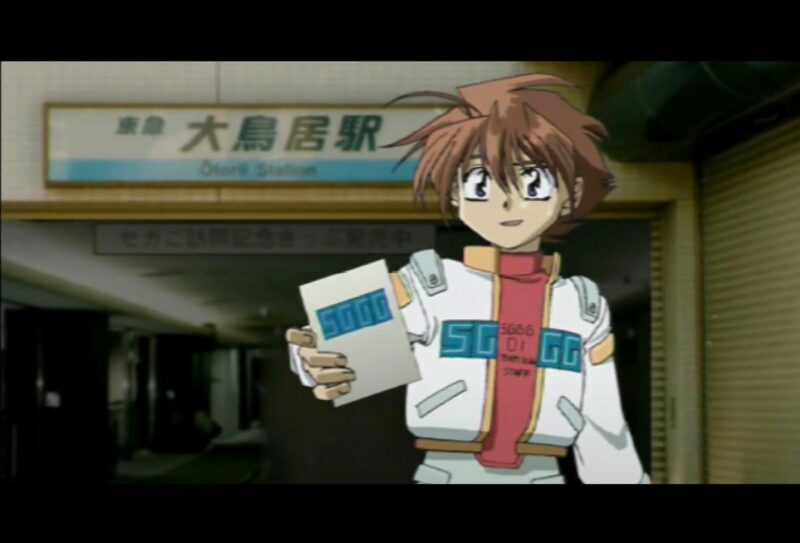
Credit: Sega.
Funny business
Despite today being a highly profitable software and arcade-machine company, Sega is nonetheless a byword for bad business decisions, given its enforced abandonment of the hardware market in 2001 following the commercial failure of its final console, the Dreamcast.
This was quite a comedown for a company whose 16-bit Mega Drive had enjoyed long periods of dominance in Europe and North America. In a 2015 interview, Tom Kalinske, CEO of Sega of America during the firm’s early 1990s heyday, complained his old employer had “made the wrong decisions for 20 years” (i.e., since he stopped working for them in 1996, conveniently enough) and that “You have to really make a lot of mistakes to kill [such] a strong brand.”
According to Kalinske, one major such mistake was when he had made a verbal deal with Sony of America to collaborate on a new shared platform which would eventually go on to become Sony’s own market-leading PlayStation. Putting the plan to his superiors at Sega Japan, Kalinske’s deal was rejected. This, said Kalinske, was “the stupidest decision ever made in the history of business.”
Perhaps the weirdest decision ever made in the history of business, meanwhile, was Sega’s idea to release a now fabled pseudo-RPG on the Dreamcast named Segagaga (SGGG for short), satirising the company’s complete lack of post-Mega Drive business sense. As if to prove the accuracy of its premise, Segagaga first went on sale on March 29 2001, a mere two days before the real-life company announced the discontinuation of the Dreamcast itself, and Sega’s permanent exit from the home-console market in favour of becoming a software-only publisher instead, on March 31.
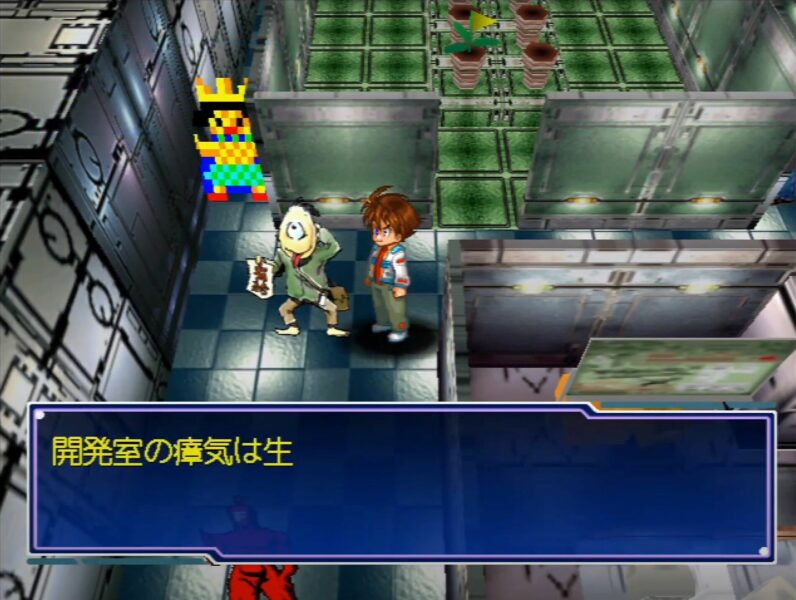
Credit: Sega.
To be this incompetent takes AGES
Billed as a “Sega simulation”, the game tells the story of how Sega’s execs, finally admitting they no longer had any more idea of how to run a profitable video game business than Gerald Ratner knew how to run a successful jewellery-chain, grab random children from the street and put them in charge instead. “Now is the time to save Sega with your own hands!” screams the back-cover box-blurb.
Taking on the role of one kidnapped kid, Sega Taro – history’s greatest ever example of nominative determinism – the player has to rescue Sega from bankruptcy at the hands of its chief rival the DOGMA Corporation, a parody of Sony (with a little dash of Nintendo thrown in) who by 2025, the year in which Segagaga is set, have captured 97 percent of the market. Their all-conquering DOGMA GamePyramid is a geometrical upgrade on Nintendo’s GameCube, but is really just a pseudonym for Sony’s PlayStation 2, by then busily wiping the floor with the Dreamcast following its own launch in March 2000.
Gameplay is split into parts. First comes a basic RPG, in which your kidnapped self must wander the dungeon-like maze of Sega Tower, where employees have been locked inside for so long by slave-driving bosses that they’ve degenerated into ‘subhumans’ – mutants who you must defeat in turn-based insult-contests. The point is to verbally demoralise them until they agree to join your own internal game-development team for the lowest salary possible. As many have drinking problems (a Japanese charity aiding the children of people with alcoholism complained about some such elements of the game, leading to resultant censorship), this doesn’t prove too difficult – at least if you can read enough Japanese to navigate the battle-menus.
Sim city
Then comes the sim element, where you put your new recruits to work, hopefully creating enough hits to slowly seize back the 97 percent market share from DOGMA Corporation. Guided by Alisa from the Phantasy Star RPG series disguised as a businesswoman, your choice is whether to churn out cheap shovelware in search of a quick buck, or spend years crafting a high-quality masterpiece like Shenmue, the much-hyped Dreamcast exclusive so expensive to make it notoriously almost bankrupted Sega entirely.
After three years, the development cycle finishes, the ending being determined by how profitable your games have been. Suddenly, the game then morphs into a shoot-’em-up using previously-unreleased elements from the cancelled Dreamcast 2D shooter Thunder Force VI (a game later completed by Segagaga’s director for PlayStation 2, ironically enough). This final level was actually later released as a standalone Japan-only mobile phone game in 2005.
The end-of-game boss is a multi-level manifestation of all Sega’s previous home-hardware consoles, which evolves from SG-1000 to Master System to Mega Drive (complete with its unsuccessful, coffers-draining Mega CD and 32X add-ons), ending with the equally failed 32-bit Saturn. You don’t get to kill the Dreamcast itself, however, as Sega were by this point too busy doing this themselves.
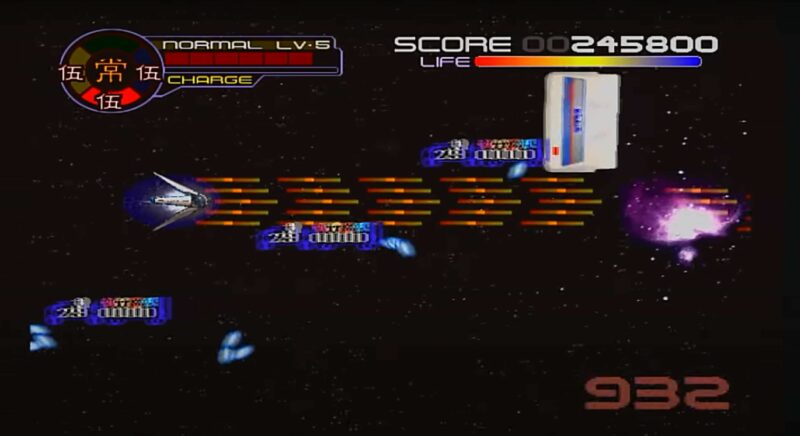
Credit: Sega.
American idol
One key reason for the in-game Sega’s decline to only 3 percent market-penetration are tensions between the US and Japanese arms of the business. The fictional Sega of America is, by comparison to its inept Japanese parent-wing, a great commercial success, echoing the way the Mega Drive sold millions in the States, but barely registered in its homeland, where Nintendo’s SNES reigned supreme.
This is solely due to the wise and flamboyant leadership of Sega of America’s CEO, Director Cool – a man who bears a surprising similarity to none other than his non-pixelated, IRL flesh-based counterpart, Tom Kalinske, mentioned above. As the game’s plot progresses, however, a Scooby Doo-like unmasking of Director Cool occurs, in which Cool/Kalinske is revealed as a double-agent, none other than the undercover CEO of DOGMA Corporation, who is deliberately helping run Sega into the ground.
What kind of company would think it could possibly be a good idea to release a potentially libellous game mocking its bosses as idiots and accusing one of its most prominent employees of actually being a corporate saboteur in the pay of its chief real-life rivals? The Sega of 2001, clearly.
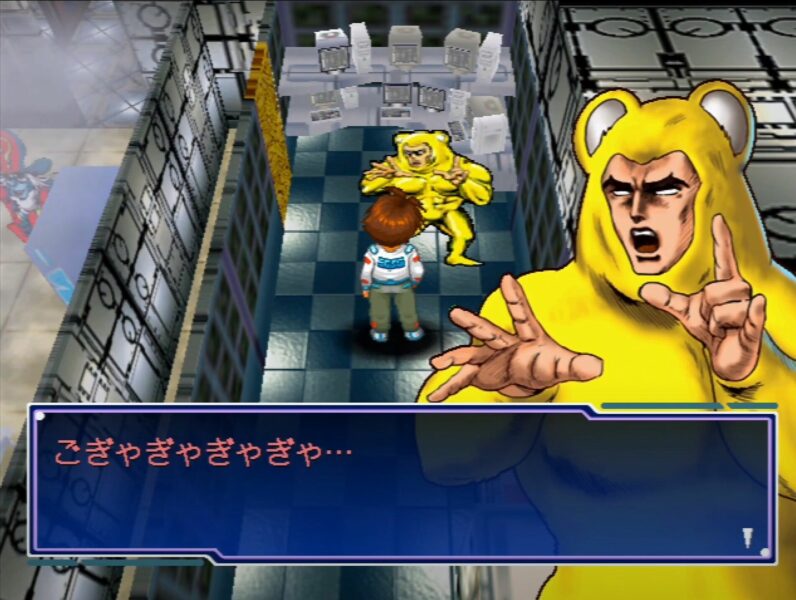
Credit; Sega.
Dream machine
Although a flop at the time, the Dreamcast is now fondly-remembered; if Sega ever released a retro ‘Mini’ version of it, akin to their successful 2019 Mega Drive Mini device, it would surely do excellent business. Which, of course, is precisely why it probably never will.
Yes, the console still had its mainstream titles, like Virtua Tennis, Power Stone, Jet Set Radio and Soul Calibur, and notable innovations like Chu Chu Rocket!, the first online-capable console game ever made, but there was also much incomprehensible oddness. Several games were so unusual they required their own specific peripherals, which could often only be used with that one game before being summarily abandoned – a poor commercial decision in itself.
There was Samba De Amigo, a rhythm-action game involving a perma-grinning cartoon monkey in a sombrero which came with a pair of electronic maracas, Get Bass, with its motion-sensing fishing-rod, and Typing of the Dead, in which a full-blown QWERTY keyboard was used to kill zombies by speed-typing random words at them to make their heads explode.
Most notorious was the microphone-compatible Seaman, gaming’s only ever marine pet-simulator based around the player being repeatedly insulted by a fish with a human face and the voice of Leonard Nimoy. Even within this strange era, however, Segagaga still stands out as notably strange.
Wrestling with failure
Segagaga was the work of director Tez Okano, who in an informative 2008 interview with Edge denied the game’s title has anything to do with the 1984 Queen song Radio Ga Ga. Instead, it was originally going to be titled SegaSega, but this became Segagaga as it was dedicated to Sega’s true mega-fans, those who were ‘gaga’ for all its products, no matter how deranged. The game is filled with cameos from past Sega IPs as famous as Sonic the Hedgehog and Panzer Dragoon, and as obscure as Ristar and Sir Tongara de Pepperouchau III from Clockwork Knight. Early Sega mascot Alex Kidd is in it, too; he now has a dead-end job and a drinking problem, clinically depressed by being pushed aside in favour of Sonic during the 16-bit era.
Creating the game initially in secret, Okano pretended he was creating an internal company history project, hence his messing about with images of old company IP and photographing actual employees to place in the game as enemies without their knowledge.
When Okano first presented his idea to Sega’s board, they thought it was a joke, sending Okano away with smiles but no budget. One particular exec, Hisao Oguchi, realised he was serious, however, and managed to sneak Okano a tiny budget to go away and make the game almost by himself – hence its often unashamedly low production values, with many low-poly characters with few or no frames of animation and weird visual interludes with terrifying rubber glove-puppets.
By the time Segagaga was complete and Okano’s efforts were revealed to the board, they reasoned the company was doomed anyway, so Sega gave the game a commercial release. Continuing the financial farce, as nobody thought the game would actually sell – unlike, say, a title about befriending a humanoid fish voiced by Mr Spock – Okano was handed a publicity budget of only £142 (this is not a misprint). As Okano said, the game was the work of “just one being: me!”, and this extended to the game’s marketing too.
Okano blew £94 of his £142 on a wrestling mask, put it on and stood around Tokyo in disguise signing copies of his game for those fanboys genuinely Sega Gaga enough to turn up and buy one (some of them even followed him around, buying multiple copies wherever he set up his next stall). Ironically, the game’s lack of publicity caught the attention of Japanese newspapers, who reported on the game’s comically low PR budget, thus garnering it shedloads of promotion after all.
Did the game actually sell, then? Not really. According to current estimates, it shifted around 34,000 copies. Nonetheless, according to Okano’s own assessment, development costs were so low this did actually represent a small profit. In true Reggie Perrin style, Sega had accidentally hit upon a method of making money from wilfully non-commercial products.
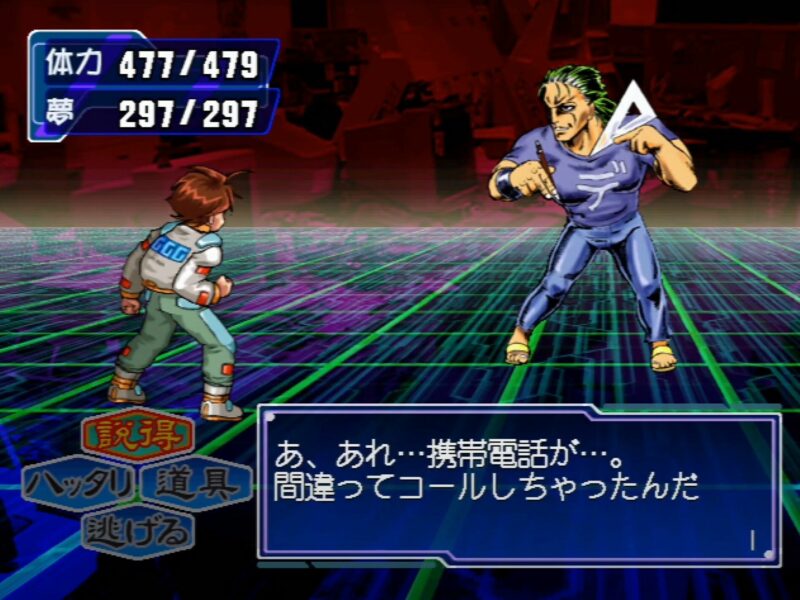
Credit: Sega.
Golden hacks
Might Segagaga therefore provide a viable model for some non-boring, future Sega-licensed NFT game? Taro Okano was originally considering making a licensed game himself, reasoning these always make money, but he had no budget to buy a licence from someone like Disney. Then he realised Sega already possessed hundreds of IPs he could use for free, although he did run into certain legal issues even here – he originally wanted to include the famous red Ferrari from OutRun as a character, but had to substitute this with a breed of shrimp whose name sounds similar to the word ‘car’ in Japanese, shrimps being entirely copyright-free, unlike trademarked brands of sports-vehicle.
As Okano correctly perceived, ordinary consumers might not care (or even know) about obscure characters from Golden Axe, NiGHTS, Space Harrier, After-Burner or Baku Baku Animal, but obsessive Sega mega-fans certainly do – so much so, some of them will quite happily turn out to buy multiple copies of the same game from a weirdo wearing a wrestling mask. If the Sega of today wish to exploit such otaku by selling them one-of-a-kind in-game NFTs of, say, Astal, Dr Robotnik, Tails, the Super Monkey Ball crew or Adelie from Doki Doki Penguin Land for $100 a pop, they could no doubt do so.
The original printing of the game even comes with some handy images which could easily be used as instant NFTs. By hacking the GD-ROM (Sega would never use any medium as conventional as CD-ROMs), you could access crude cover-art for dozens of fictional games originally intended to act as the titles pumped out by your simulated in-house programming team. Parodies of IPs from both Sega and other companies, with names like Mortal Wombat and Final Pharmacy VII, these were wiped from later printings of the game, presumably due to copyright issues again.
One thing’s for certain: any hypothetical future Segagaga NFT blockchain game certainly wouldn’t be as “boring” as Shuji Utsumi might have feared.


